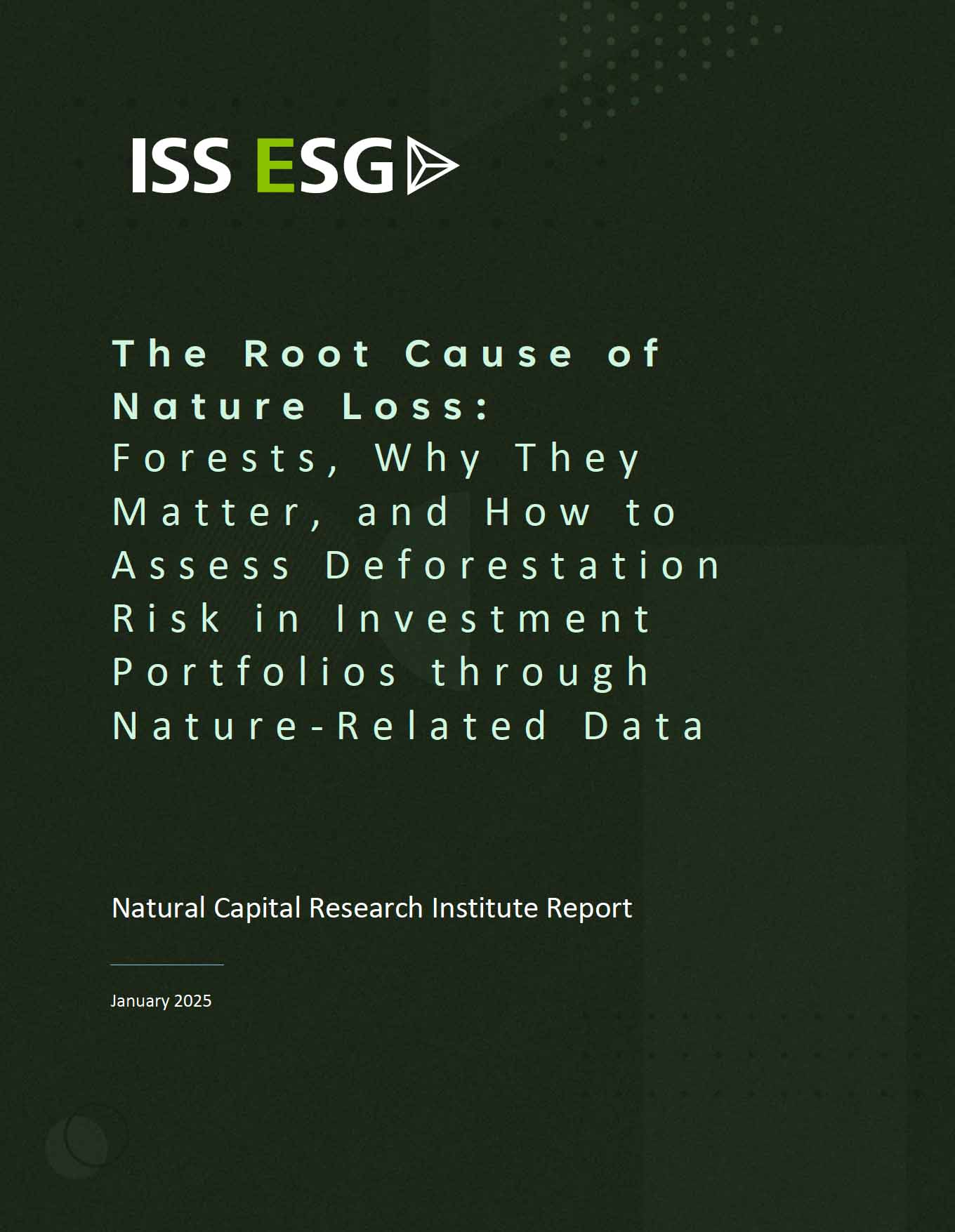
Natural Capital Research Institute Report
The Root Cause of Nature Loss: Forests, Why They Matter, and How to Assess Deforestation Risk in Investment Portfolios through Nature-Related Data
January 9, 2025
The scientific community is once again raising the alarm on the rapid and severe deterioration of the earth’s natural systems and the implications this will have for the stability of our planet, economic activity, and human wellbeing. Institutional investors are taking note and are increasingly aware of the “twin crises” of biodiversity loss and climate change and the fact that these crises are interconnected, and one cannot be solved without addressing the other.
Land use change has been identified as the most important impact driver of nature loss. Deforestation – defined as any activity that causes a loss and subsequent conversion of forested land – is therefore central to the biodiversity and climate change conversation. Tropical forests, in particular, are the most essential carbon sequestration and biodiversity agent, as they hold around 70% of the global forest carbon sink power and are home to around 67% of all land-based biodiversity.
Further, there are other impact offshoots associated with forest loss. For example, deforested land rapidly degrades due to factors such as low soil fertility and water stress, leading to more land being deforested to replace land that is no longer usable for agriculture. This cycle of deforestation to soil degradation to further deforestation is vicious, increasing biodiversity loss, water stress, and exponential carbon emissions through destruction of carbon sinks and release of stored carbon.
Given the imperative of protecting forests to address the world’s most pressing environmental challenges, the inaugural flagship study of ISS STOXX’s Natural Capital Research Institute is focused on deforestation, particularly of tropical forests.
This report is set to answer the question:
How are global institutional investors exposed to deforestation risks in their investment portfolios, and how can they assess and mitigate those risks—and related impacts and dependencies—while capitalizing on nature-based opportunities?



